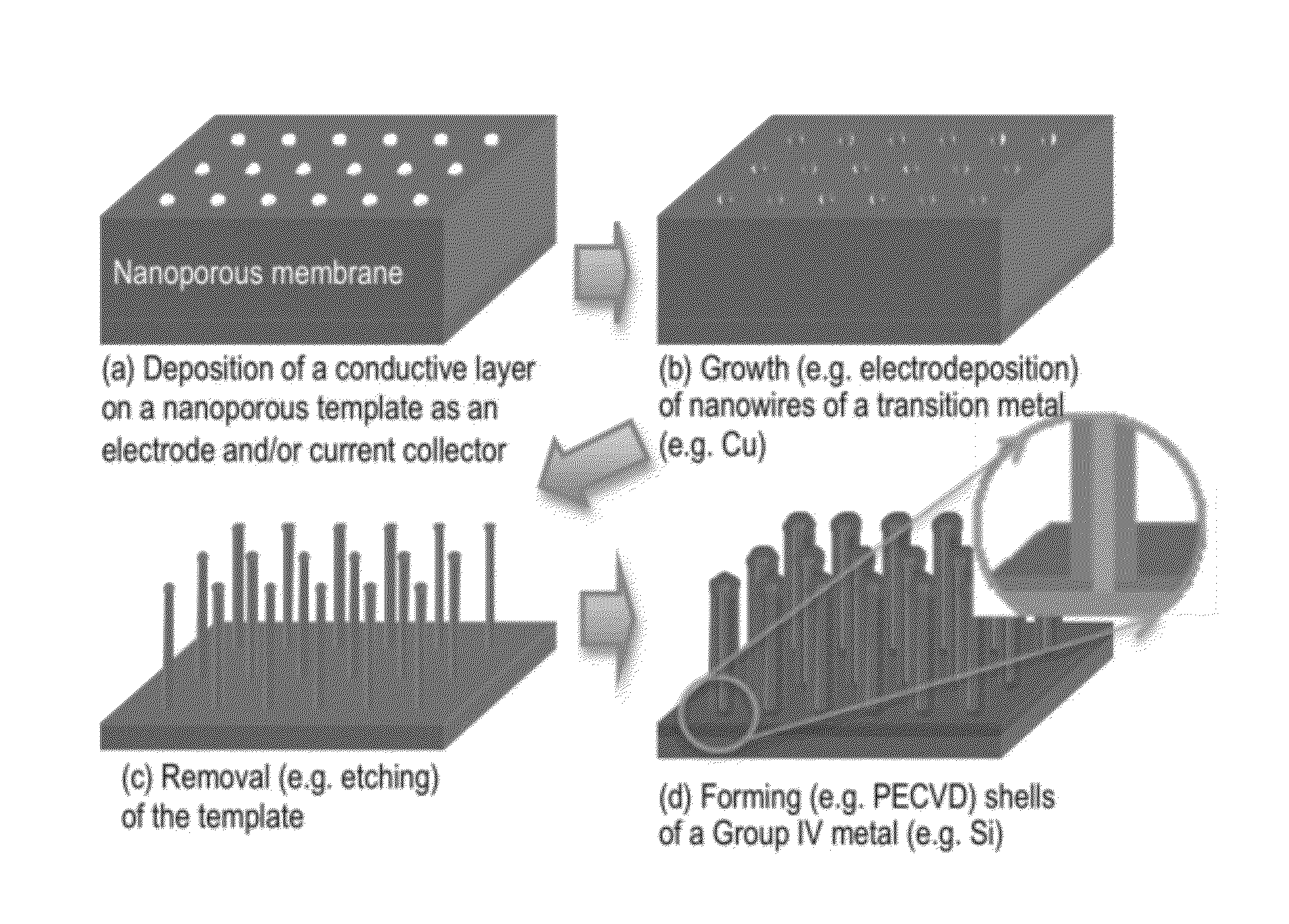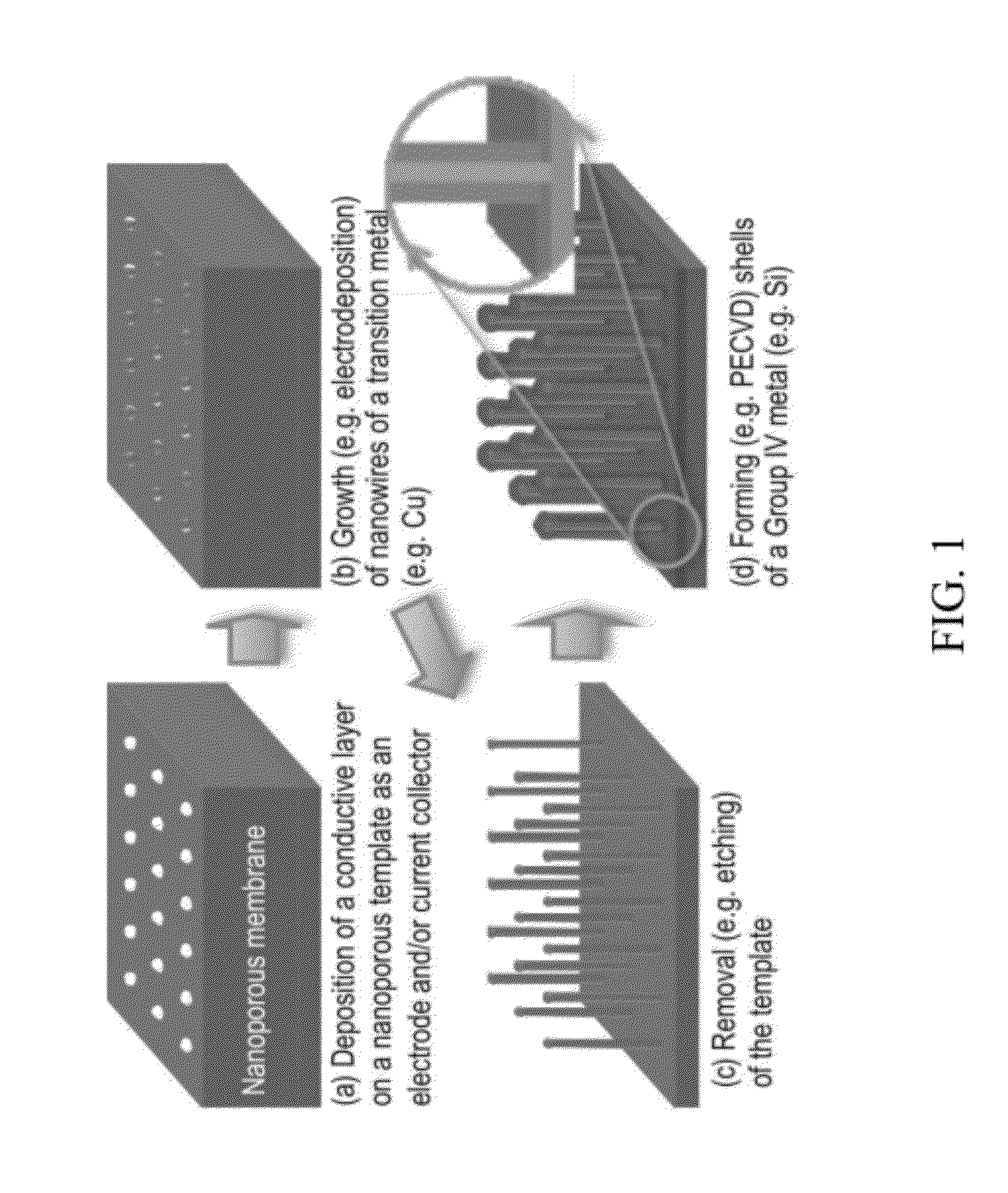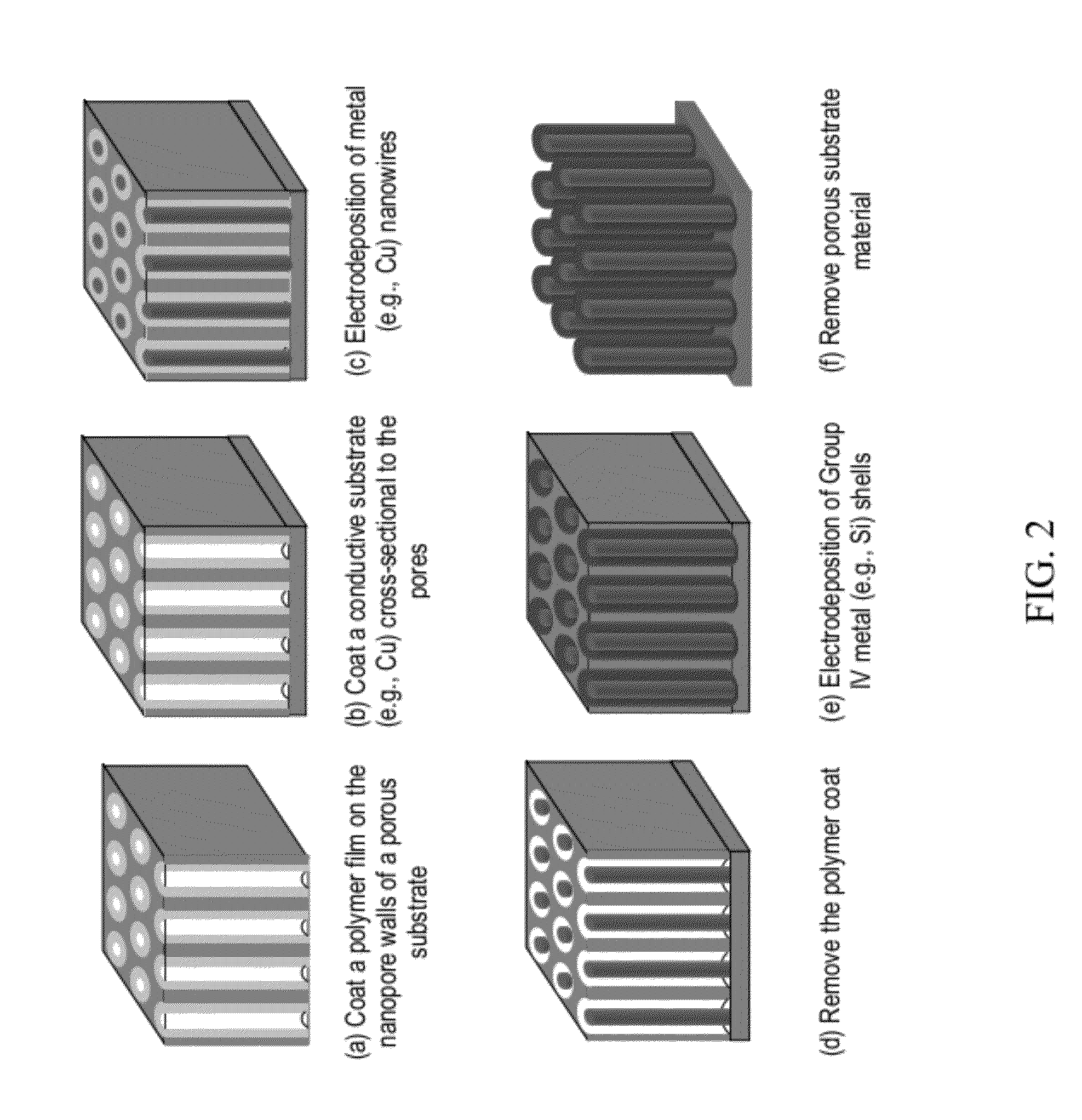Composite nanowire compositions and methods of synthesis
- Summary
- Abstract
- Description
- Claims
- Application Information
AI Technical Summary
Benefits of technology
Problems solved by technology
Method used
Image
Examples
example 1
Synthesis of a Cu—Si Core-Shell Nanowire Array
[0085]A Cu—Si core-shell nanowire array was fabricated according to the general schematic shown in FIG. 1 (i.e., by template-aided electrodeposition). A nanoporous polycarbonate (PC) membrane was used as a template. The template had a nominal pore size of 100 nm, a nominal pore density of 4×108 / cm2, and a nominal membrane thickness of 6 μm. Referring to step (a) of FIG. 1, a thin gold film of 50-100 nm thickness (indicated as a bottom layer) was first sputtered on a side (i.e., backside) of the PC membrane using metal evaporation. This gold layer was too thin to cover the pores. Then, a thicker copper backplate (−20 μm) was grown on top of the gold film via electrodeposition. The deposition was conducted using a CHI model 660A potentiostat / galvanostat (CH Instruments, Austin, Tex.) in a three-electrode configuration with a Ag / AgCl reference electrode. The electrolyte was an aqueous solution containing 0.6 M CuSO4 and 1.0 M H2SO4. The app...
example 2
Electrochemical Evaluation of the Cu—Si Core-Shell Nanowire Array as an Anode Material for Lithium-Ion Batteries
[0089]Two-electrode coin-type half-cells were assembled for the Cu—Si core-shell nanowire array, produced according to Example 1, using lithium metal foil as the counter / reference electrode with a polypropylene membrane separator. The electrolyte solutions contained 1.2 M LiPF6 in a 1:2 mixture (by weight percent) of ethylene carbonate (EC) and dimethylcarbonate (DMC). Cells were assembled in glove boxes filled with pure argon. Galvanostatic charge—discharge cycling was performed using a multichannel battery tester from Maccor Inc., model 4000. They were tested in a potential range of 2.0-0.005 V using a constant current charge-discharge protocol at various rates from C / 30 to 10 C. The initial half-cell testing results are described below and shown in FIG. 7.
[0090]The capacity of the Cu—Si core-shell nanowire array was observed to be approximately 1000 mAh / g at a charge / di...
PUM
 Login to View More
Login to View More Abstract
Description
Claims
Application Information
 Login to View More
Login to View More - R&D
- Intellectual Property
- Life Sciences
- Materials
- Tech Scout
- Unparalleled Data Quality
- Higher Quality Content
- 60% Fewer Hallucinations
Browse by: Latest US Patents, China's latest patents, Technical Efficacy Thesaurus, Application Domain, Technology Topic, Popular Technical Reports.
© 2025 PatSnap. All rights reserved.Legal|Privacy policy|Modern Slavery Act Transparency Statement|Sitemap|About US| Contact US: help@patsnap.com



